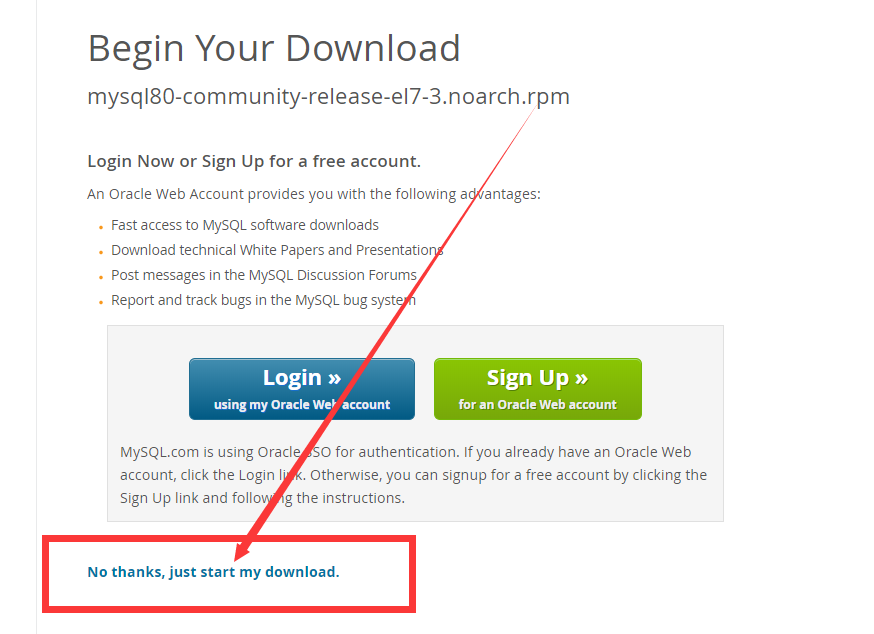Centos7.6 build LNMP environment
Preface
The system is centos7.6 nginx is 1.12 php is 7.2 MySQL is 8.0.16
nginx service##
- Installation dependencies
sudo yum install -y yum-utils - Install nginx service
sudo yum install -y nginx - Configure
nginxto support php
location ~ .php$ {try_files $uri =404; root /usr/share/nginx/html; fastcgi_pass 127.0.0.1:9000; fastcgi_index index.php; fastcgi_param SCRIPT_FILENAMEdocument_root fastcgi_script_name; include fastcgi.conf;} the fifth line It is your web directory, my (centos7.6+nginx1.12) environment defaults to the location ofusr/share/nginx/html
Install php environment##
-
If you have installed the
phpservice before, please uninstall it first
yum -y remove php* -
Since the yum source of linux does not exist in php7.x, we have to change the yum source
rpm -Uvh https://dl.fedoraproject.org/pub/epel/epel-release-latest-7.noarch.rpm rpm -Uvh https://mirror.webtatic.com/yum/el7/webtatic-release.rpm -
Install php72w and various extensions, just choose what you need
yum -y install php72w php72w-cli php72w-common php72w-devel php72w-embedded php72w-fpm php72w-gd php72w-mbstring php72w-mysqlnd php72w-opcache php72w-pdo php72w-xml -
Edit php.ini
In the file (vim /etc/php.ini) find;cgi.fix_pathinfo=1and change it tocgi.fix_pathinfo=0 -
Create nginx users and groups
groupadd -r nginx useradd -r -g nginx nginx This step is for insurance, just enter the above instructions separately, regardless of the prompt -
Edit php-fmp file
vim /etc/php-fpm.d/www.conf

Change user = xxx and group = xxx in the figure to user = nginx, group = nginx
- Nginx pseudo-static settings (prevent article page 404)
server{ location / { if (-f $request_filename/index.html){ rewrite (.) $1/index.html break; } if (-f $request_filename/index.php){ rewrite (.) $1/index.php; } if (!-f $request_filename){ rewrite (.*) /index.php; } } } - Start fpm, set to start and restart nginx
systemctl start php-fpm systemctl enable php-fpm systemctl restart nginx
Install MySQL8.0 service##
-
First go to Official Website to check the latest installation package
-
Download the MySQL source installation package

You can download it and upload it to the server with the xshell tool, or you can download it directly on the server with the command wget http://dev.mysql.com/get/mysql80-community-release-el7-3.noarch.rpm
- Install the yum source just downloaded
yum -y install mysql80-community-release-el7-3.noarch.rpm - Check the installation effect

-
Well, start the installation!
yum install mysql-community-server
Here you can go for a cup of tea, it's really long! ! -
Installation is complete Start MySQL service
systemctl start mysqld.servicemay freeze -
View MySQL running status
systemctl status mysqld.service

- Initialize the database password
**View the initial password **grep "password" /var/log/mysqld.log

Use the password to log in to the account root
-
Sign in
mysql -uroot -ppassword is obtained in the previous step -
change Password
ALTER USER'root'@'localhost' IDENTIFIED BY'****************';**** can be replaced with your password.
mysql installs the password security check plugin (validate_password) by default. The default password check policy requires that the password must contain uppercase and lowercase letters, numbers, and special symbols, and the length cannot be less than 8 characters. Otherwise, it will prompt ERROR 1819 (HY000): Your password does not satisfy the current policy requirements error -
Set auto start
systemctl enable mysqld``systemctl daemon-reload
Create new user##
create user 'username'@'localhost' identified by 'password';
Modify the authentication method to log in to phpmyadmin
ALTER USER'username'@'localhost' IDENTIFIED WITH mysql_native_password BY'your password';
Create database
create typecho;
Give database ownership
grant all on database.* to 'username'@'localhost' ;
Recommended Posts